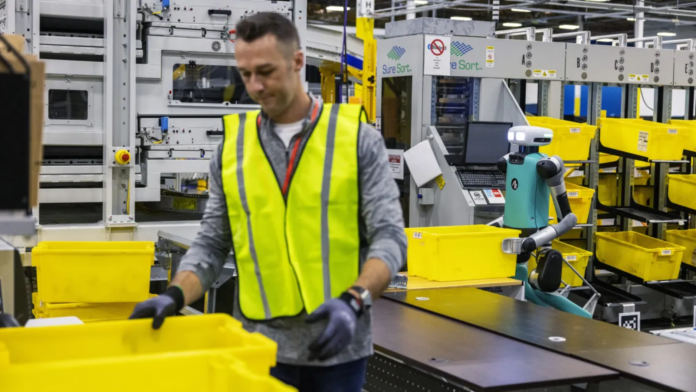The realm of robotics is undergoing a transformative phase, with large language models (LLMs) and generative AI at the forefront of this evolution. This fusion of cutting-edge technology is set to redefine how robots communicate, learn, and operate. Among the pioneers in this field is Agility, an Oregon-based startup, which is making significant strides in integrating these technologies with its humanoid robot, Digit.
Agility’s latest venture involves using LLMs to enhance Digit’s communication capabilities. The company recently released a video demonstrating this integration. In the video, Digit, which has not been pre-programmed with specific tasks, successfully interprets and executes a complex command: to identify and move a box to the tallest tower, based on a description likened to “Darth Vader’s lightsaber.” While the robot’s movements are measured and cautious, reflecting its early-stage development, the successful execution of the task is a promising glimpse into the future of robotic interaction.
The company’s innovation team has been working on making Digit more versatile and quicker to deploy. The integration of LLMs allows Digit to understand natural language commands, showcasing a significant leap in robotic technology. This approach to robot communication is not just about understanding human language; it’s about interpreting context, nuances, and even abstract concepts.
During a panel at Disrupt, Gill Pratt from the Toyota Research Institute shed light on how generative AI is being used to accelerate robotic learning. By employing modern AI techniques, robots can learn from just a few examples of human demonstration, a method based on something called diffusion policy. This approach, developed in collaboration with Columbia and MIT, has already enabled the teaching of 60 different skills to robots.
Daniela Rus of MIT CSAIL also emphasized the power of generative AI in robotics, particularly in motion planning. The solutions offered by these AI technologies are not only faster but also more fluid and human-like in control. The implication is that future robots will move with a grace and ease that closely mirrors human motion, a stark contrast to the rigid, mechanical movements traditionally associated with robots.
Digit represents a prime example of how advanced commercial robotic systems can benefit from this technology. Being piloted in real-world settings like Amazon fulfillment centers, Digit is positioned to demonstrate how robots can effectively collaborate with humans in various environments. The ability for robots to understand and respond to human instructions is essential for their integration into our daily lives and workspaces.
This technological advancement is not just about making robots more efficient or versatile; it’s about creating a future where robots can seamlessly integrate into human environments, understanding and responding to our needs in a way that feels natural and intuitive. The potential applications of these AI-enhanced robots are vast and hold great promise for various sectors, from industrial automation to customer service.
In conclusion, the integration of LLMs and generative AI in robotics, as exemplified by Agility’s Digit, marks a significant milestone in the field. It opens up new possibilities for how robots can learn, operate, and interact in human-centric environments. As this technology continues to evolve, we can expect to see robots becoming more responsive, adaptable, and, importantly, more attuned to the nuances of human communication and behavior.












